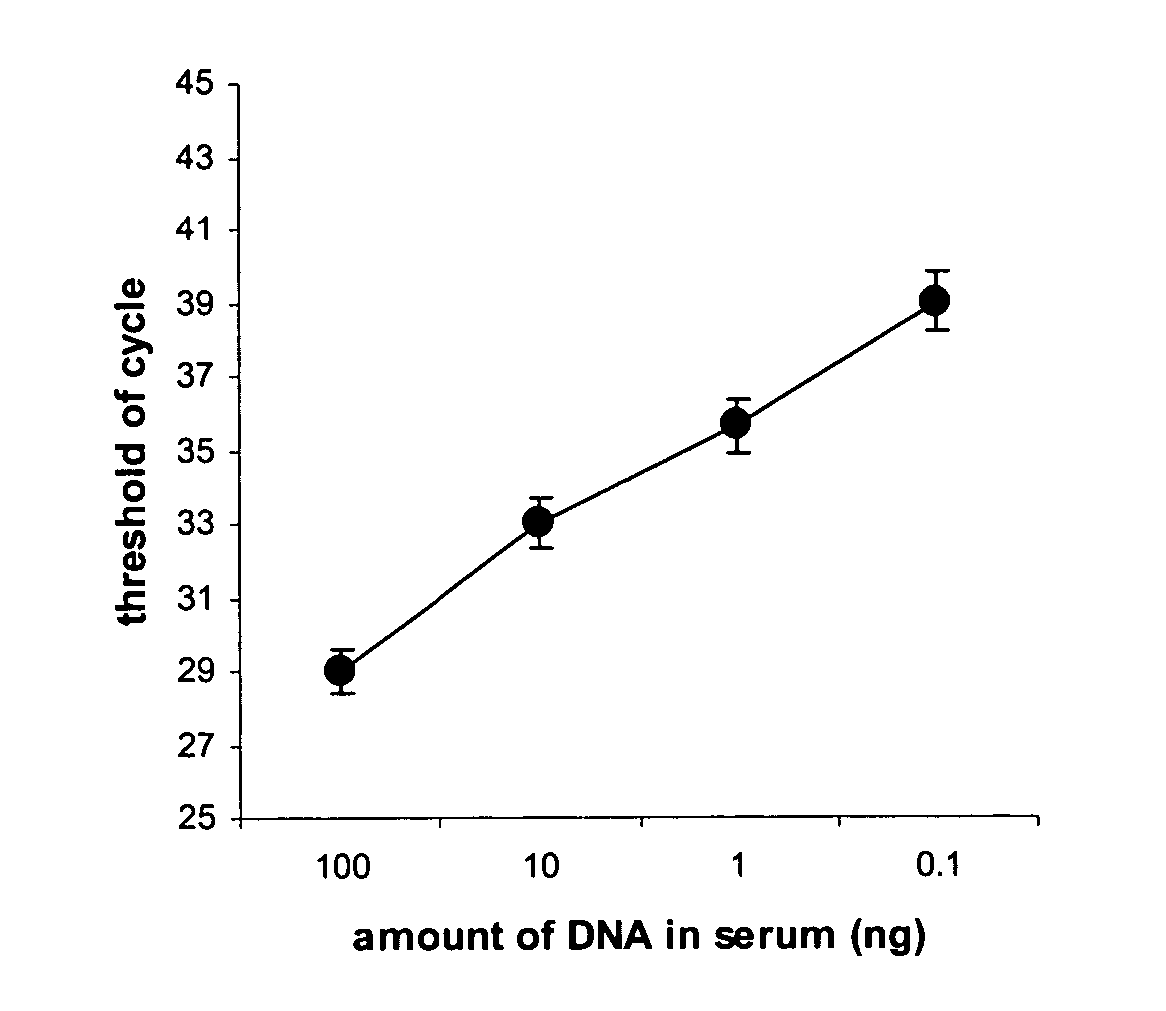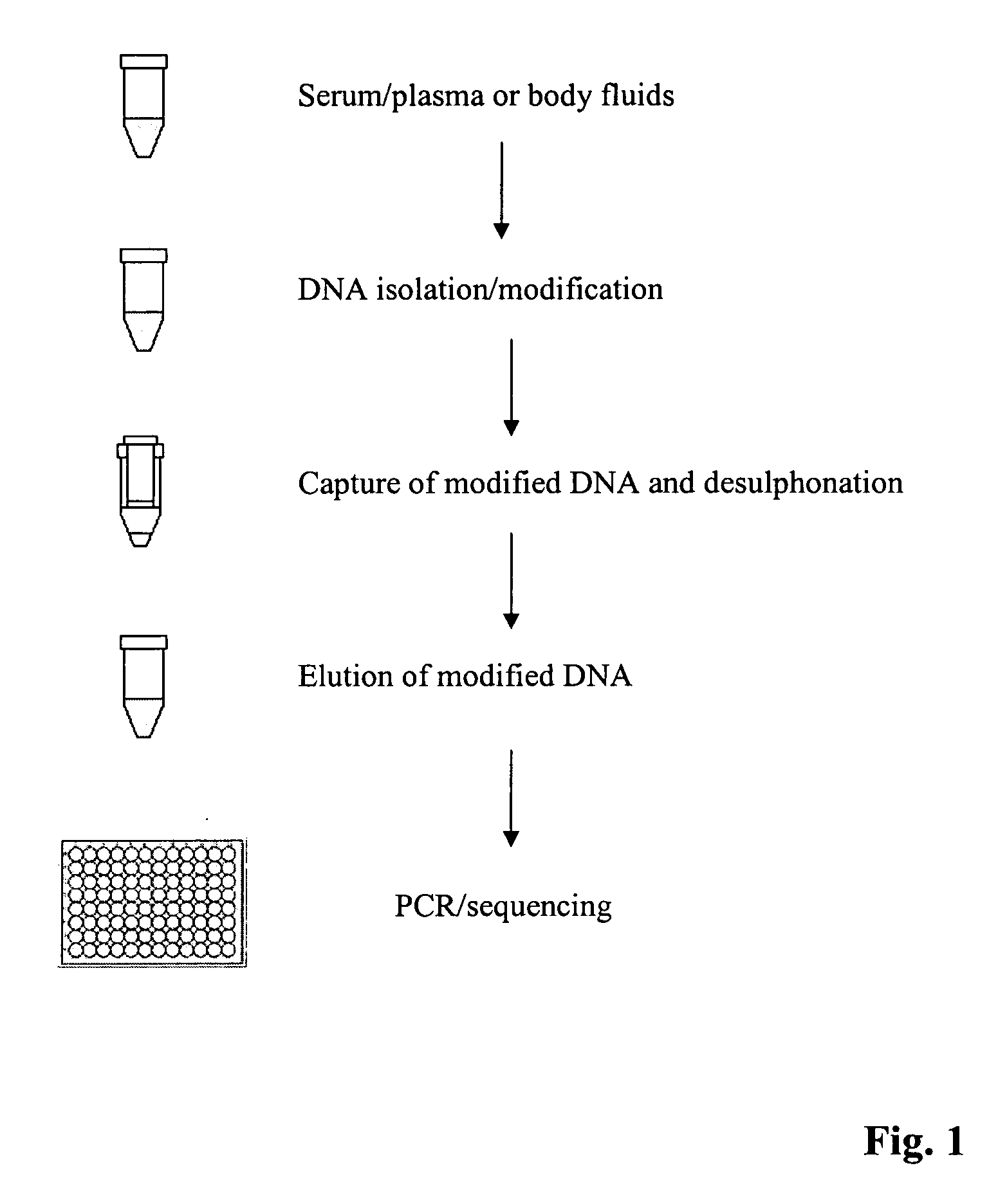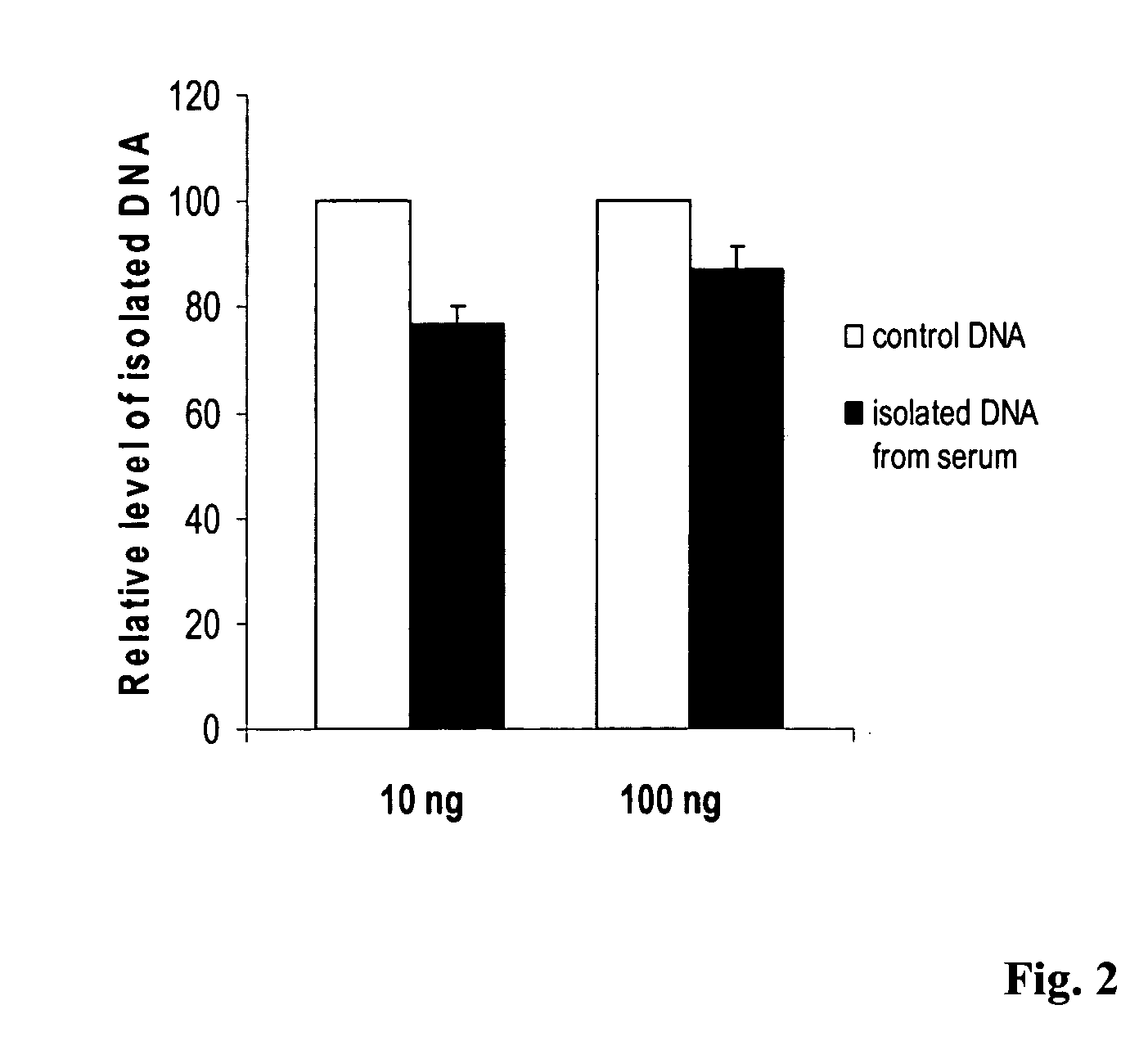Method for isolating and modifying DNA from blood and body fluids
a methylation-based, dna technology, applied in the direction of biochemistry apparatus and processes, sugar derivatives, organic chemistry, etc., can solve the problems of low clinical sensitivity of existing methylation-based cancer detection methods, insufficient application of existing dna methylation-based technologies to clinical cancer detection, and inability to detect cancer samples using non-invasive approaches. achieve high efficiency and fast isolation and modification, and achieve easy and rapid isolation. , the effect of rapid completion
- Summary
- Abstract
- Description
- Claims
- Application Information
AI Technical Summary
Benefits of technology
Problems solved by technology
Method used
Image
Examples
example 1
[0028] This experiment was carried out in two groups to show the recovery of DNA from serum by using the method of this invention. In group 1, the DNA extracted from blood of a volunteer was added into fetal calf serum (FCS) at different concentrations and mixed. 200 ul of FCS containing different concentrations of DNA were then added to an equal volume of lysis buffer, which comprises a solution of 0.3 M NaOAc and 5 M NaCl with pH 9.0 and 0.25% of proteinase K. The mixture was incubated for 10 min at 65° C. and DNA was then precipitated by adding 0.6 volume of 100% isopropnol followed by centrifugation. Precipitated DNA was kept in the same tube and denatured with 0.2 M NaOH. In comparison, in group 2, the DNA extracted from same blood was directly denatured with 0.2 M of NaOH. Both denatured DNA from group 1 and 2 were then treated with a modification solution for 1 h at 65° C. The modification solution comprises 3.2 M of Na2S2O5, 500 mM of KCl and 0.2 mM EDTA. The solution contai...
example 2
[0029] This experiment was carried out in three groups to determine the DNA degradation rate and DNA modification efficiency by using the method of this invention. In group 1, 2 and 3, different concentrations of DNA extracted from blood of a volunteer was denatured. Denatured DNA from group 1 was treated with a modification solution generated in this invention for 1 h at 65° C. The modification solution comprises 3.2 M of Na2S2O5, 500 mM of KCl, and 0.2 mM EDTA. Denatured DNA from group 2 was treated with a conventional modification solution for 1 h at 65° C. Denatured DNA from group 3 was treated with a conventional modification solution for 16 h at 50° C. The conventional modification solution comprises 5 M of sodium bisulfite and 8 mM of hydroquinone. After modification, the solution containing the modified DNA from group 1 were mixed with a modified DNA binding buffer comprising non-chaotropic salts and added into a column apparatus with inserted DNA capture filter. The mixed s...
example 3
[0030] This experiment is carried out to determine the minimum amount of DNA required for chemical modification by using the method of this invention. DNA extracted from blood of a volunteer was added into fetal calf serum (FCS) at concentrations of 0.05, 0.5, 5, and 50 ng / 100 ul, respectively. 200 ul of FCS containing different concentrations of DNA were then added to an equal volume of lysis buffer, which comprises a solution of 0.3 M NaOAc and 5 M NaCl with pH 9.0 and 0.25% of proteinase K. The mixture was incubated for 10 min at 65° C. and DNA was then precipitated by adding 0.6 volume of 100% isopropnol followed by centrifugation. Precipitated DNA was kept in same tube and denatured with 0.2 M NaOH. Denatured DNA was then treated with a modification solution for 1 h at 65° C. The modification solution comprises 3.2 M of Na2S2O5, 500 mM of KCl and 0.2 mM EDTA. The solution containing modified DNA was mixed with modified DNA binding buffer comprising non-chaotropic salts and adde...
PUM
| Property | Measurement | Unit |
|---|---|---|
| temperature | aaaaa | aaaaa |
| temperature | aaaaa | aaaaa |
| time period | aaaaa | aaaaa |
Abstract
Description
Claims
Application Information
 Login to View More
Login to View More - R&D
- Intellectual Property
- Life Sciences
- Materials
- Tech Scout
- Unparalleled Data Quality
- Higher Quality Content
- 60% Fewer Hallucinations
Browse by: Latest US Patents, China's latest patents, Technical Efficacy Thesaurus, Application Domain, Technology Topic, Popular Technical Reports.
© 2025 PatSnap. All rights reserved.Legal|Privacy policy|Modern Slavery Act Transparency Statement|Sitemap|About US| Contact US: help@patsnap.com



